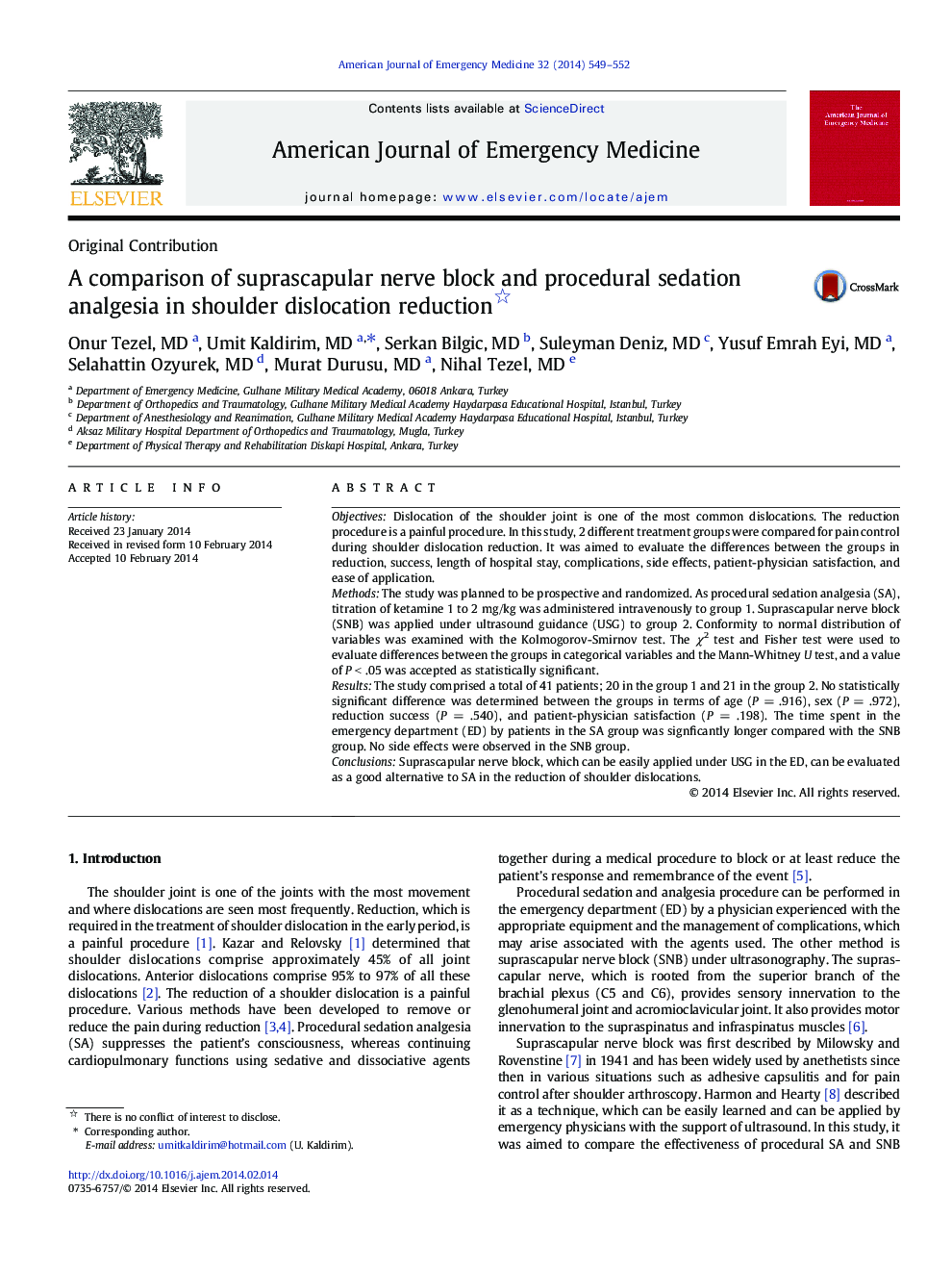| Article ID | Journal | Published Year | Pages | File Type |
|---|---|---|---|---|
| 3225045 | The American Journal of Emergency Medicine | 2014 | 4 Pages |
ObjectivesDislocation of the shoulder joint is one of the most common dislocations. The reduction procedure is a painful procedure. In this study, 2 different treatment groups were compared for pain control during shoulder dislocation reduction. It was aimed to evaluate the differences between the groups in reduction, success, length of hospital stay, complications, side effects, patient-physician satisfaction, and ease of application.MethodsThe study was planned to be prospective and randomized. As procedural sedation analgesia (SA), titration of ketamine 1 to 2 mg/kg was administered intravenously to group 1. Suprascapular nerve block (SNB) was applied under ultrasound guidance (USG) to group 2. Conformity to normal distribution of variables was examined with the Kolmogorov-Smirnov test. The χ2 test and Fisher test were used to evaluate differences between the groups in categorical variables and the Mann-Whitney U test, and a value of P < .05 was accepted as statistically significant.ResultsThe study comprised a total of 41 patients; 20 in the group 1 and 21 in the group 2. No statistically significant difference was determined between the groups in terms of age (P = .916), sex (P = .972), reduction success (P = .540), and patient-physician satisfaction (P = .198). The time spent in the emergency department (ED) by patients in the SA group was signficantly longer compared with the SNB group. No side effects were observed in the SNB group.ConclusionsSuprascapular nerve block, which can be easily applied under USG in the ED, can be evaluated as a good alternative to SA in the reduction of shoulder dislocations.
